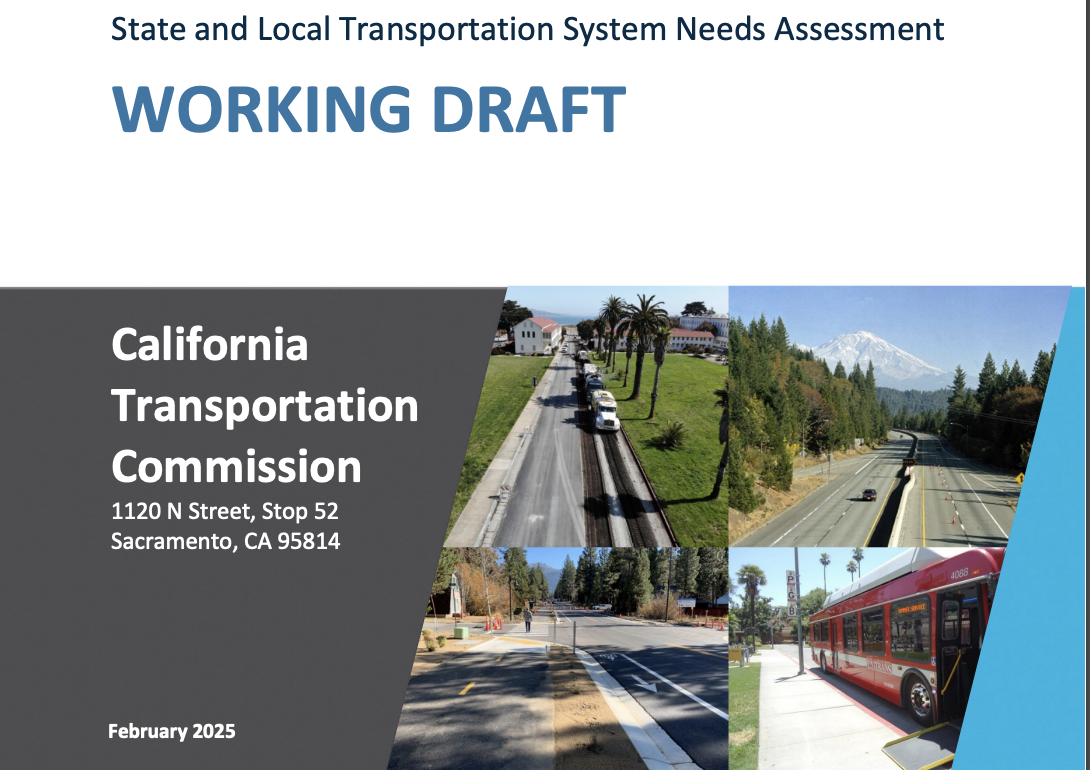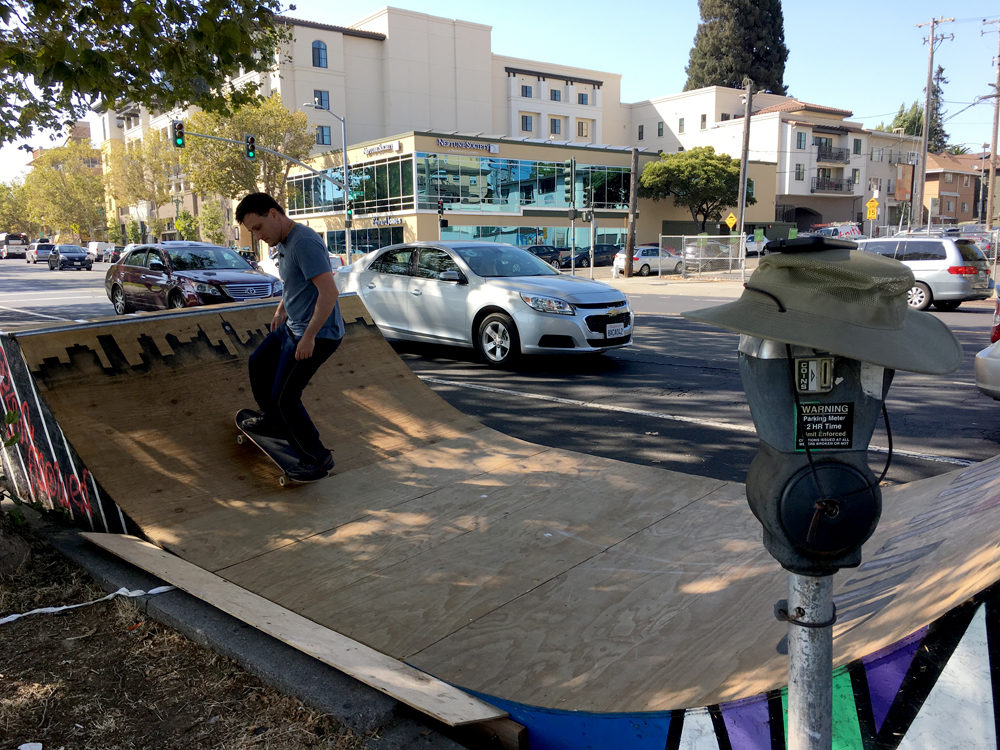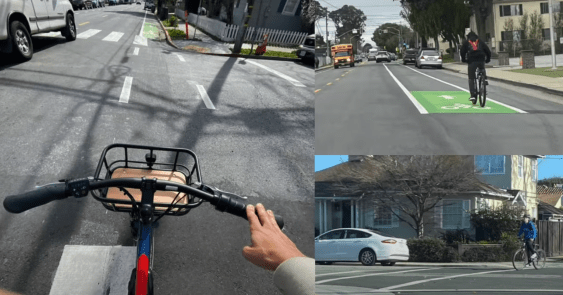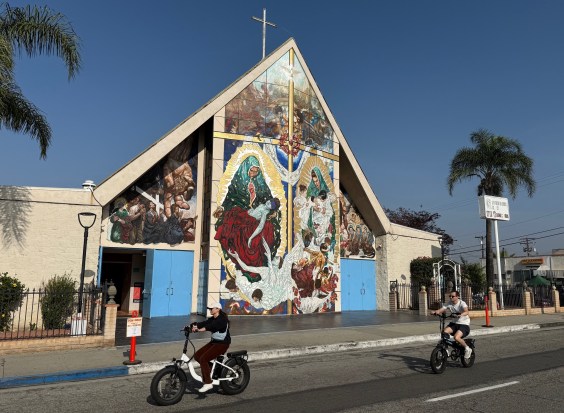Last month, the State of California released the Draft State Highway System Management Plan (SHSMP), a document required by the legislature every two years. SHSMP provides a ten-year prediction of statewide transportation funding needs. Despite the word “highway” appearing in the title, the SHSMP also discusses the decade-long needs of transit agencies and local road repair and upgrades.

The SHSMP webpage is here, or you can go straight to the report here. Comments on the draft plan are due by the end of the month, and can be submitted here.
The report attempts to project the cost of all of the state’s transportation needs. So, if your local transit agency is planning to upgrade its fleet or Caltrans is planning to widen a freeway, these project costs are included in the report.
This year’s draft report recommends that California change the way it collects money for transportation. For generations, much of the state’s transportation dollars have been collected from a gas tax. However, as greater fuel efficiency is reducing the gas tax revenues, the amount collected is declining every year. Electric cars do the same damage to the roadways (or in the case of cybertrucks, even more damage to the roadways) as gasoline powered ones, so the needs remain the same regardless of what types of cars people drive.

The SHSMP estimates that the state will need to - over the next decade - invest $757.7 billion dollars into transportation (excluding funding for the CA high-speed rail project). The largest need is “transit investments,” totaling $351.5 billion dollars, roughly 40% of the entire estimate. The next two highest costs were for maintenance of “local roads and streets” ($240.7 billion) and “state highway system” ($101.7 billion).
But future needs are greater than forecasted revenue.
From various state, regional, local and even federal sources, the SHSMP estimates the state will bring in $541 billion over the same time. The report notes that earlier revenue estimates had put that number $30 billion higher, but the report is taking into account declining gas tax revenue.
Thus, if the state remains largely reliant on the gas tax and nothing else changes, the report estimates a $216.4 billion shortfall over the next decade.
The report gives state leaders a handful of options to fix this problem, but in the end it boils down to a choice between finding new streams of revenue to add to the gas tax, replacing the gas tax with another source of revenue such as a “road charge” (based on miles driven), or having a massive shortfall of funding for the state’s transportation needs.
While the state and other government agencies collect money through tolls, the process of creating new toll roads (even on existing roads) can be cumbersome. While the report doesn’t rule out tolling as one way to help close the shortfall, it recommends against relying on tolls to fill all of it. Similarly, the report does not recommend relying on fare increases, because they could price people out of using transit (which is against the state’s goal of reducing greenhouse gases) and wouldn’t come close to raising hundreds of billions of dollars.
There are several shortfalls with the report as written.
The first is that the report, just like everything else based on assumptions about how the federal government works that was written more than eight weeks ago, probably estimates the amount of federal support the state will receive for its transportation programs. Less than 10% of the state’s revenue for transportation over the next decade is expected to come from the federal government ($46.2 billion), but even that number is probably high given the announcement earlier this week that USDOT will be reviewing all funding programs to root out ones having to do with “green infrastructure.”
Neither USDOT Secretary Sean Duffy nor President Donald Trump are thought to be fans of California’s transportation priorities. The President has made no effort to keep his personal feelings and politics out of federal funding policies since taking office. Just ask Maine.
The second major issue is that the report doesn’t make any effort to rank transportation projects and priorities based on whether the state actually needs them, or whether or not they are in line with the state’s transportation priorities. Funding for transit and the funding for state highways are assumed to be equally needed.
The report doesn’t discuss in any detail the potential for cutting costs. Canceling harmful projects, such as highway widenings, could go a long way toward closing the projected deficit, while better aligning state spending with state housing, climate, and health goals.
California's future transportation funding picture looks messy, even just given federal politics by itself. Ongoing climate-driven disruptions (wildfires, drought, sea level rise, etc.) won't make things any easier. The governor and legislative leaders and the electorate are very likely to face difficult choices in the coming decade.






